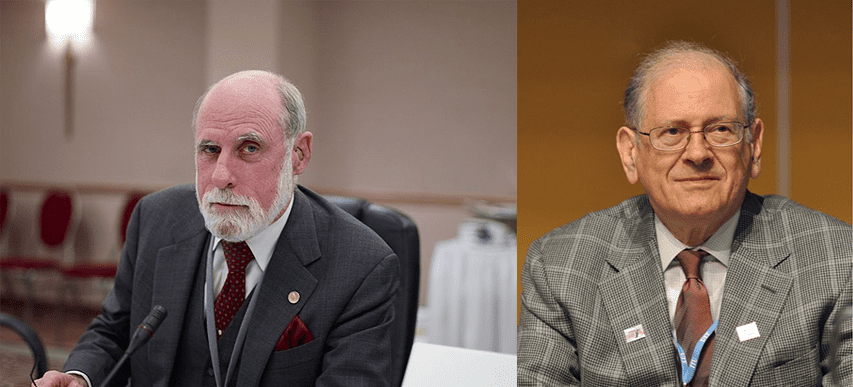
Most people consider Vinton Cerf and Robert Kahn, who designed the Transmission Control Protocol (TCP) in 1973, to be the inventors of the internet. During that time, the internet morphed out of ARPANet, a government project. However, it would be unfair to credit the invention of such a ubiquitous network to a single person since dozens of pioneering scientists, programmers, and engineers made fundamental contributions to the internet as we know it today.
The fathers of the Internet
In 1969, the Advanced Research Projects Agency (ARPA) — the US defense department’s research branch which today is known as the Defense Advanced Research Projects Agency (DARPA) — built a computer network called ARPANet.
ARPANet linked computers at universities, government agencies, and defense contractors around the world — in many ways, it was the precursor of the Internet as we know it today. By 1975, ARPANet grew into a network spanning over 60 nodes — but let’s not get ahead of ourselves.
On September 2, 1969, the first data moved from a host at the University of California, Los Angeles (UCLA) through an interface message processor switch (a piece of network equipment). The first message sent through this precursor to the internet was delivered at 10:30 PM, October 29, 1969, by Charley Kline, a UCLA student. Kline tried to type “login” but the system only managed to transmit “lo” to a computer at the Stanford Research Institute (SRI), a couple of hundred miles away, and then crashed. This was a double world first: the first message sent over the internet and the very first server crash.
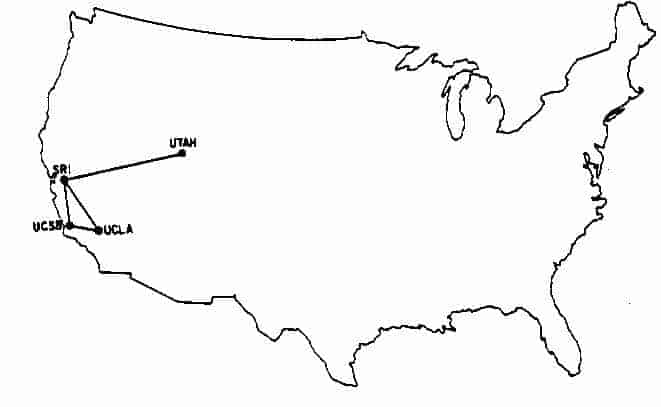
During that time, computers were actually huge mainframes that served an important military role in computing and communications.
However, ARPANet had a huge problem. In order to be effective for military and intelligence operations, the network had to be able to communicate with terminals located thousands of miles away in Europe, Africa, the Middle East, or any in other of the US military’s 800 bases scattered in more than 70 countries around the world.
This was enormously challenging. Engineers had to figure out a way not only to network the military’s widely dispersed terminals via radio and satellite, but also connect these wireless nodes with the wired network at ARPANet where the country’s most powerful computers were located.
Getting networks to communicate with one another was much more challenging than networking two or more computers. Each network moved data differently, which ultimately made transferring information practically impossible. Something had to be done — and this is where two very bright ARPA researchers by the name of Robert Kahn and Vint Cerf came in.
In 1973, the pair devised a new communication architecture with a universal set of rules that essentially allowed computer networks to speak the same language.
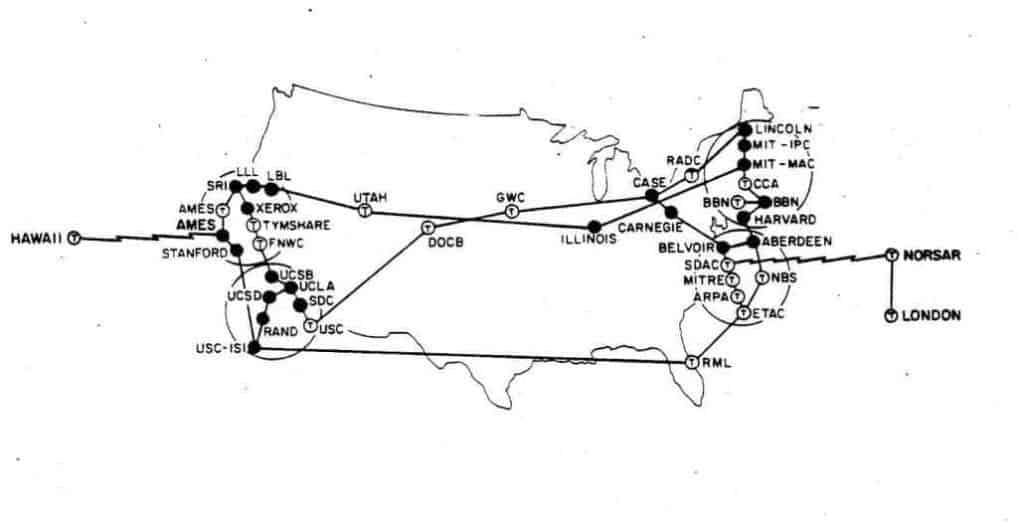
On one hand, this new architecture had to contain strict rules in order to ensure the reliable transfer of data. On the other hand, the rules also had to be flexible enough to accommodate all the different types of data that could be transmitted. You see, from the very start, Cerf and Kahn designed their inter-network communication protocol for scale — this proved to be essential for the tremendous growth the internet would later come to experience, which surpassed even the wildest expectations of its creators.
The packet-switching technology, known as the Transmission Control Protocol (TCP), was designed around four major principles:
- Network connectivity. Any network could connect to another network through a gateway.
- Distribution. There would be no central network administration or control.
- Error recovery. Lost packets would be retransmitted.
- Black box design. No internal changes would have to be made to a network to connect it to other networks.
As Cerf explained:
“The job of the TCP is merely to take a stream of messages produced by one HOST and reproduce the stream at a foreign receiving HOST without change.”
TCP was published in December 1974. That same year, the commercial version of ARPANET, known as Telenet, was introduced. It’s widely considered to be the first ISP (internet service provider).
“When Bob Kahn and I did the original designs we handed them out freely with no constraints, no patents, no other intellectual property claims for a very good reason. We wanted this to be accepted with no barriers to adoption,” Cerf said during a talk.
Later, TCP was married to the Internet Protocol (IP) to form TCP/IP which is still used to this day to exchange data packets between different distant networks. TCP on the sender’s machine breaks a message into packets and sends them out while IP addresses and forwards these individual packets.
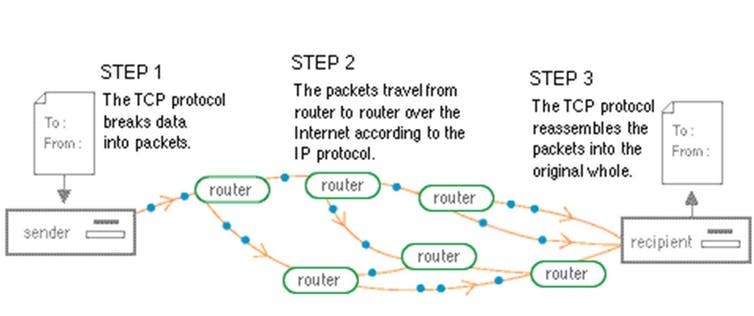
Decades later, the internet grew at a tremendous rate.
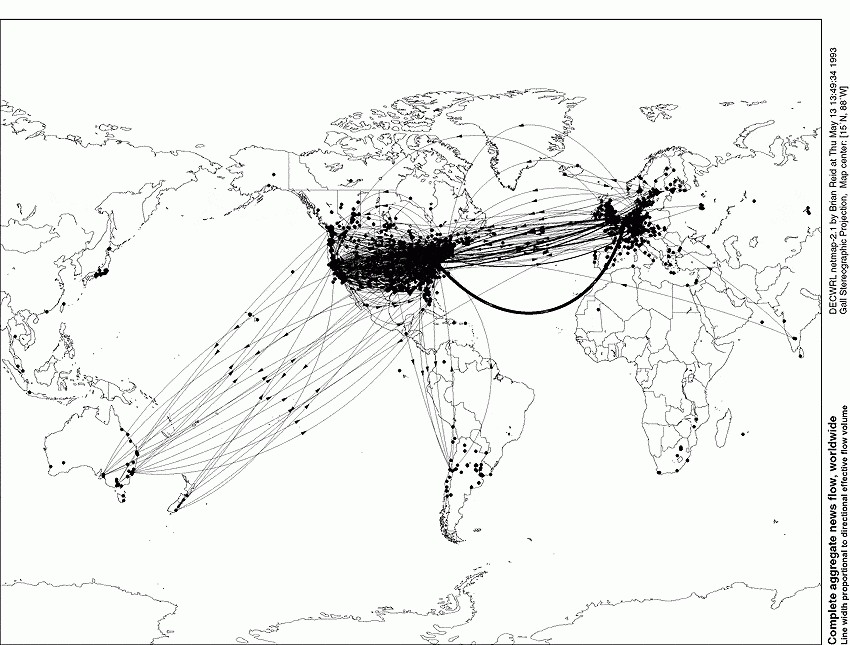
The evolution of THE Internet
The first to envision the concept of the internet was Leonard Kleinrock, in his famous paper entitled “Information Flow in Large Communication Nets” on May 31, 1961.
In 1962, J.C.R. Licklider spoke about his vision of a “galactic network”. Later, his ideas would become the foundation work for ARPANet founded by Robert Taylor.
On December 9, 1968, Doug Engelbart of Stanford Research Institute unveiled the concept of hypertext — text that links to other text or documents — predating the web by a couple of decades. During the same 90-minute presentation, which would go in history as “The Mother of All Demos,” Engelbart also introduced to the world for the first time ever the computer mouse, word processing, advanced graphic displays, collaborative editing, and video conferencing.
In 1972, Ray Tomlinson unveiled the first network email.
In 1973, computers at the University College of London in England and the Royal Radar Establishment in Norway connected to ARPANET, marking the first global computer network. It is during this time that the term internet (inter-networks) was born.
In 1974, Cerf and Kahn unveiled TCP that laid out the foundation so that networks around the world could communicate with one another.
Dennis Hayes and Dale Heatherington released the first modem in 1977. The network device quickly became the most popular way for home users to get online.
In 1978, TCP split into TCP/IP, driven by Danny Cohen, David Reed, and John Shoch to support real-time traffic. The creation of TCP/IP helped create UDP and was later standardized into ARPANET on January 1, 1983.
In 1979, USENET, the first message board where people could freely share news and discussions appeared online.
In 1982, TCP/IP was declared the primary protocol for ARPANET, which to this day remains the standard protocol for the internet.
The Domain Name System (DNS) was introduced in 1983, allowing people to visit online pages by typing a name followed by familiar extensions such as .edu, .com, .gov., .org, etc. Previously, users had to introduce the IP address of a host, such as 123.325.285.13. The first registered domain was symbolics.com, the website for Symbolics Computer Corp. in Massachusetts.
In 1989, AOL launched its Instant Messenger chat service. Users were welcomed by one of the most iconic greetings in tech history.
In the early 1980s, Tim Berners-Lee, while working at CERN, experimented with hypertext and designed a system for academics to users to link together research documents, similar to a modern-day wiki. This system was essentially the first version of HTML (Hypertext Markup Language).
Later, in 1991, by combining HTML with a Uniform Resource Locator (URL) assigned to any document and a protocol to link everything together, CERN unveiled the World Wide Web. The WWW’s website, info.cern.ch, was developed by Berners-Lee himself and was unveiled at CERN and published online on August 6, 1991.
The next year, the first audio and video files were shared over the internet and the phrase “surfing the internet” became popularized.
In 1993, CERN released the World Wide Web technology to the public domain, effectively donating it to the world. The number of websites reached 600. The White House and the United Nations were among the latest to go online.
The first widely-used graphical WWW browser, Mosaic, launched in April 1993. Netscape, Mosaic’s main competitor, appeared a year later.
The year 1995 was a watershed year for the Internet: Microsoft launched Windows 95 and Internet Explorer, services like Amazon, Yahoo and eBay appeared, and Java was created, allowing for animation on websites and resulting in a new flurry of internet activity.
In 1996, Nokia released the Nokia 9000 Communicator, which was the first cell phone capable of connecting to the internet.
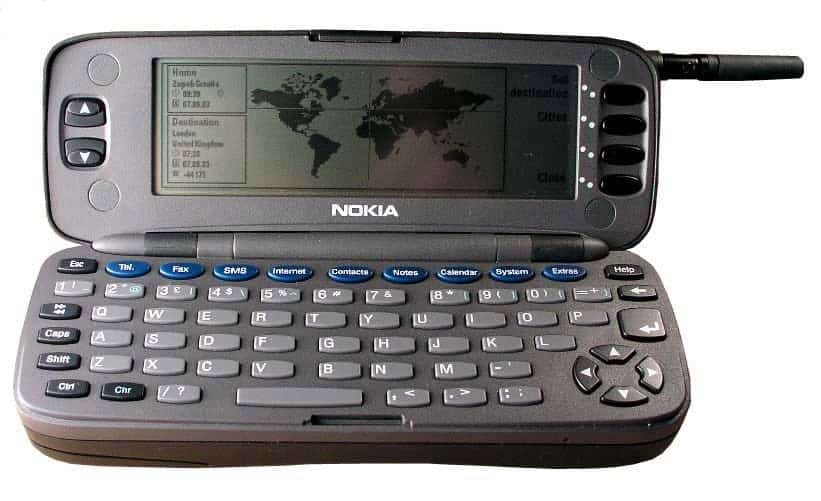
Also in 1996, a 3D animation called The Dancing Baby became the world’s first viral video.
In 1999, scientists discover the first internet virus capable of copying and sending itself to a user’s address book.
The famous dotcom bubble occurred in 2000. By 2001, most publicly traded dotcom companies went bankrupt. Meanwhile, a young American company by the name of Google experienced a meteoric rise.
In 2004, Harvard student Mark Zuckerberg launched thefacebook.com, which would later turn into Facebook — the world’s largest social network with well over 2.5 billion active users today.
In 2006, Google acquired YouTube for $1.65 billion. That year, Twitter launched.
In 2007, Apple launched its first iPhone, changing the way people use the internet forever. The following year, Apple launched the App Store with 552 applications.
In 2010, the number of internet users reached 2 billion. By 2016, the number of internet users swelled to 3.4 billion.
In 2018, Facebook was hit by one of the year’s biggest controversies due to the Cambridge Analytica data-sharing scandal.
The internet of the future
The internet has gone a long way from the first stuttered hello at UCLA on October 29, 1969. It was all made possible by overcoming the apparent technical triviality of making two computers talk to each other, something that we owe not only to Cerf and Kahn but quite possibly hundreds of scientists.
More than 50 years since the internet was invented, there are still billions of people who lack internet access — something that most people living in developed countries now take for granted. In fact, the internet has become such an integral part of modern life that many scholars argue that internet access should be considered a basic human right, similarly to the global right to health and liberty.
Startups such as Elon Musk’s Starlink hope to provide internet access to every corner of the world, no matter how remote, by forming a huge network of satellites that blanket the planet and relay data to terminals on Earth. It’s a highly ambitious plan that’s still in its infancy. It remains to be seen whether the service can be made affordable enough to be of use to those most in need.
But the future of the internet might be so exciting that it literally exceeds the boundaries of our planet. Imagine an internet connection with Mars or Jupiter’s moons — an interplanetary internet. For more, check out the interview we did with Vint Cerf last fall in Germany on the subject.


